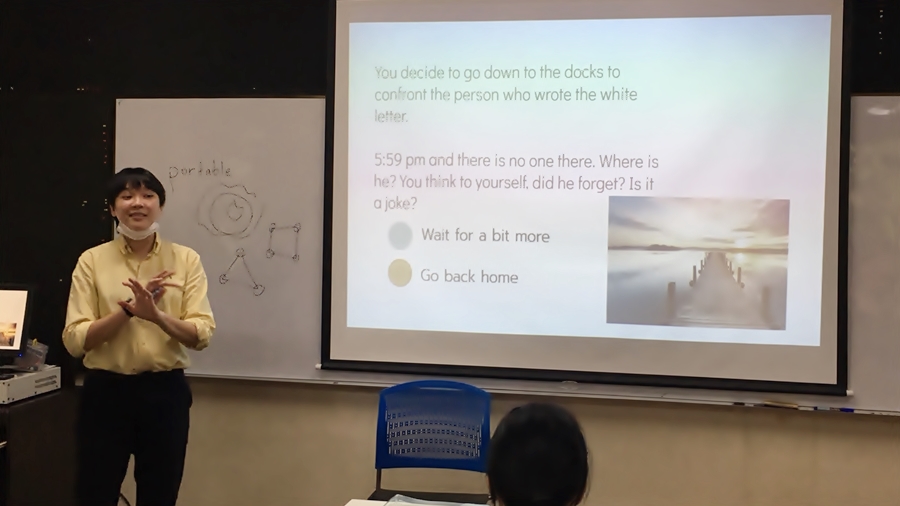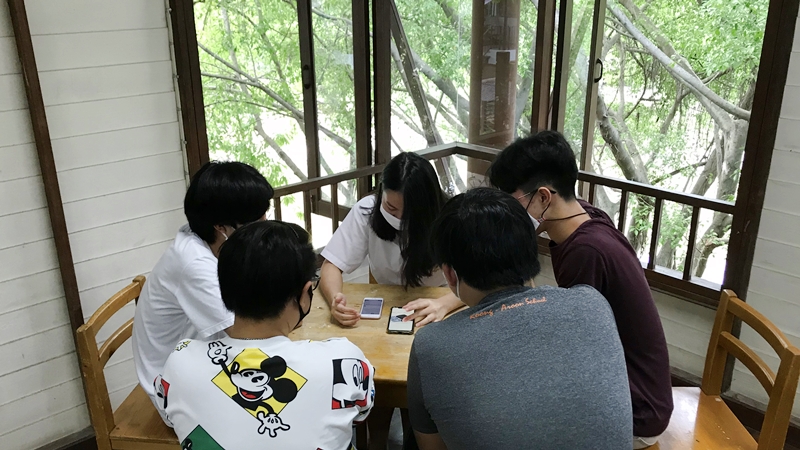
Self-Directed Learning: English Skills for Developing Autonomy

By Robin Martin, Scholar of Corporate Communications Department, Roong Aroon School Foundation
Self-directed learning in Grade 10 (Matthayom 4) is important so that students gain confidence in speaking a foreign language, being able to talk with many different people, not only with language teachers. Adolescence is the time that students yearn to be less reliant on teachers. Furthermore, with technology at their fingertips, students should feel their own capacities to take charge of the vast English resources that can be used to leverage their learning.
To work well with teenagers who strive for greater autonomy, secondary school teachers must develop a trusting feeling in the classroom. They need to enable students to take chances and to discover their expanding potentials. Gently guiding students toward a greater independence does not happen automatically; it takes a teacher with a caring attitude and a sincere openness to show students that they may approach a task in many different ways.
On the edge of Bangkok, at Roong Aroon School, in the summer of 2020, Teacher Praew tried out some new strategies for building students’ confidence in applying their English skills in creative yet simple social contexts. Her strategies encourage self-directed learning that give students greater autonomy for making their own choices.
From the start of the term, Teacher Praew had an unfolding vision of what she wanted to accomplish and how to set a tone/feeling in the classroom that would allow students to blossom in their own individual ways. Not all students may have jumped into their best English skills, but language takes time, and all students were still optimistic by the end of the term about using their language more in relation to their friends.
Setting the Pace and Mindset for Supporting Autonomy
 Praew set a clear vision with students for making her classroom relaxed and comfortable by using realistic and fun contexts. Initially, she puzzled over how to support students in speaking, listening, or responding in spontaneous conversations, so they could feel themselves getting stronger.
Praew set a clear vision with students for making her classroom relaxed and comfortable by using realistic and fun contexts. Initially, she puzzled over how to support students in speaking, listening, or responding in spontaneous conversations, so they could feel themselves getting stronger.
She wanted them to see for themselves how they could speak and write more than they realized, and to listen too, yet without being told by the teacher if they were using the language rightly or wrongly. Finding realistic tasks/activities was important so that autonomy could be built into each task.
Too much correction in language learning can lead to dead ends as students become self-conscious and stop speaking or writing spontaneously. Experimenting with language is a key to continue using it, making it playful and fun. Teacher Praew sets up all English class activities from the start of the year to ensure that students do not feel pressured, and are given ample time to engage with each task, especially final projects. No rush.
As for differentiated instruction, Teacher Praew has been learning how to give students with different English levels the right amount of challenge. She explains that she does not want to NOT “turn down the volume” of challenges for the weaker students, while still giving them extra support in more subtle ways during their independent work time. She has seen that for students’ sense of confidence, they want to be challenged regardless of their level. Rather than changing the task required to make it easier for some, she makes herself more available in assisting the students who need extra support. She is also careful to select open-ended tasks and activities that can be approached easily from a wide array of skill levels.
Between her favorite slow-paced “hip hop jazz” from Youtube playing in the background, and her active listening in relationship with students, Praew makes her classroom feel like a workshop. Students are trusted to do their work alone or in small groups as the need arises.
Conversations as well as final story plots are mostly light-hearted in nature, arising from the students’ unfolding interests and personalities. Seriousness is not pushed upon them, but comes forth in relation to class activities when it feels right to them. Making their own choices about either their 5-minute conversations or the elements of their “adventure” stories (settings, time periods, character, plot twists, and endings) contribute to their being able to direct their own learning, developing an inner sense of autonomy, with freedom from the over-assertions or the opinions of others.
Language classrooms are a wonderful place of communication in which teachers need to consider carefully how to enable students with skills that can build confidence and a blossoming sense of autonomy in relational ways.
Windows Into Holistic Learning Processes for English Teachers
 There is no “one best way” to teach English. The most important element of good language classes may be the extent to which each teacher looks carefully and endlessly at one’s own students’ needs, their interests, guiding them to find the value of learning for themselves. Consider:
There is no “one best way” to teach English. The most important element of good language classes may be the extent to which each teacher looks carefully and endlessly at one’s own students’ needs, their interests, guiding them to find the value of learning for themselves. Consider:
- What is the deeper value of learning a new language that you want to help your students realize?
- How does one help teenagers develop autonomy while becoming more aware of their own values?
The questions need time and patience to breathe into them each term, as each teacher observes their own language classroom.
If you are an English teacher, experimenting with new strategies, your own school can be a pathway for your development. Whether you are helping your own child learn a new language, or supporting the learning of a group of students, it helps to also peer into the classrooms of teachers who are experimenting with new things.
If you wish to look more deeply into various elements of Teacher Praew’s experimental 2020 Grade 10 classroom for encouraging autonomy:
- Pacing a Lesson to Engage Students
- An Authentic/Creative Atmosphere
- Authentic English Conversation with Peers
- Final Project: Choose Your Own Adventure
If you copy Praew’s methods or ideas, it could lead to a lifeless learning process. However, perhaps you may find ways to use windows into Praew’s learning/teaching processes as a touchstone to enliven your own practices–wherever you are.
There is no golden key, only the desire to keep digging deeper into your own learning/teaching practices. What best supports YOUR students’ learning?

